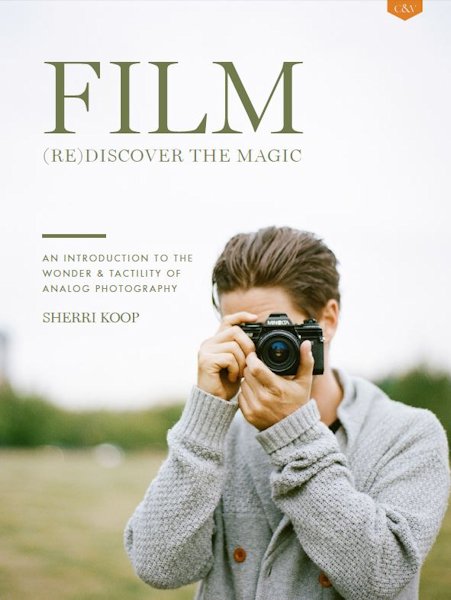I love Craft & Vision ebooks for two reasons. First, they are written by some of the most insightful and inspiring artists. Second, to be absolutely honest, the price. When I receive an email from Craft & Vision and the ebook is a subject that peaks my interest, for $10 I don’t hesitate to hit the buy button. Within minutes, I have the ebook saved on DropBox so I can access it from my iPhone, iPad or computer.

In FILM (Re)Discover the Magic: An Introduction to the Wonder & Tactility of Analog Photography, Sherri Koop begins by explaining why digital photography and social media have taught us to observe our life, and not actually participate in our life. In an effort to de-clutter and focus, she temporarily gave up her Instagram account and used film as her way of capturing and renewing a connection with life. Early in the ebook she explains why she’s chosen to use film, covers a brief history of film photography, and details her experience of having her own portrait created with the wet plate collodion process by photographer Jason Watts.
The idea of discovering, for the first time, or re-discovering the love of film photography is described through the fundamentals in the ebook. From exposure, ISO, and metering to pushing and overexposing film, Sherri Koop covers these necessities from a non-technical standpoint. Each of the basics are clearly described along with the possible results. For example, she provides a simple explanation for why a photographer might want to overexpose an image, “Overexposing film creates a denser negative, which also means a negative with more information and more leverage in printmaking. I always meter in the shadows, which typically equals overexposure by half a stop, so I am absolutely certain I have enough exposure for beautiful shadow detail. Overexposing is an in-camera technique; it is not necessary to advise your lab.”
The ebook also has chapters that explain: film stocks, film formats, and different types of cameras. Again, each is described in plain English as to what the film is used for, what you can expect, why different types of cameras and film have different purposes, why it’s important to take field notes while shooting and why you should experiment. For a reader like myself that’s discovering film, I found all of this information useful. While it can be easy for a photography book to focus on the technical aspects, the ebook features plenty of Sherri Koop’s beautiful images. Each image is captioned with the camera, lens, film, and processing information.
Without intimidation, the ebook also outlines the process of developing your own film. The process is described by the authors time spent with photographer Ray Barbee, “From beginning to end, the development is essentially a 20-minute, three-step routine: development, stop bath, and fix.” Photos in the ebook highlight the process and how gratifying it can be with the right tools, knowledge, and passion.
At the end of the ebook, Sherri Koop explains why finding your own vision is what matters most. It’s not about the gear, “What I know is this: there is no camera that will feed your vision in the long run. If it’s a good purchase decision, you will feel a renewed sense of excitement and inspiration in the short term. But I have yet to find a camera that makes me feel anything close to the passion I feel when I am fulfilling my purpose, and living out my vision. Purpose and vision have staying power; gear does not.”
At the conclusion of the book, I think it’s fair to ask myself, “Can I be a better film photographer by using the information outlined in this ebook?” The answer is definitely yes. This is an ebook I’ll return to time-and-time again for the simple explanations and a clear reminder of why vision always trumps gear.
This Post Sponsored by:
B&H Photo – The Professional’s Source – B&H has been serving professional and amateur film photographers for more than 40 years.